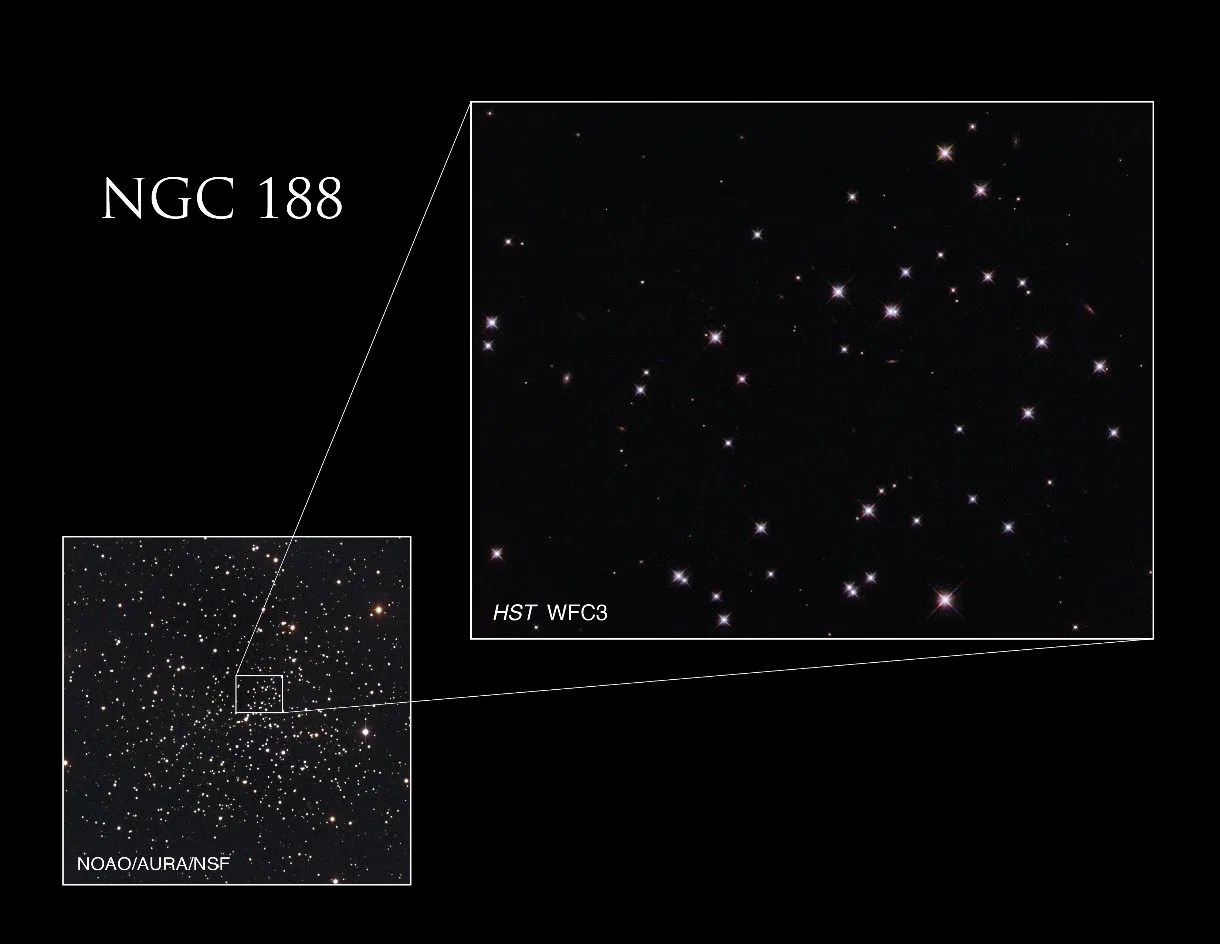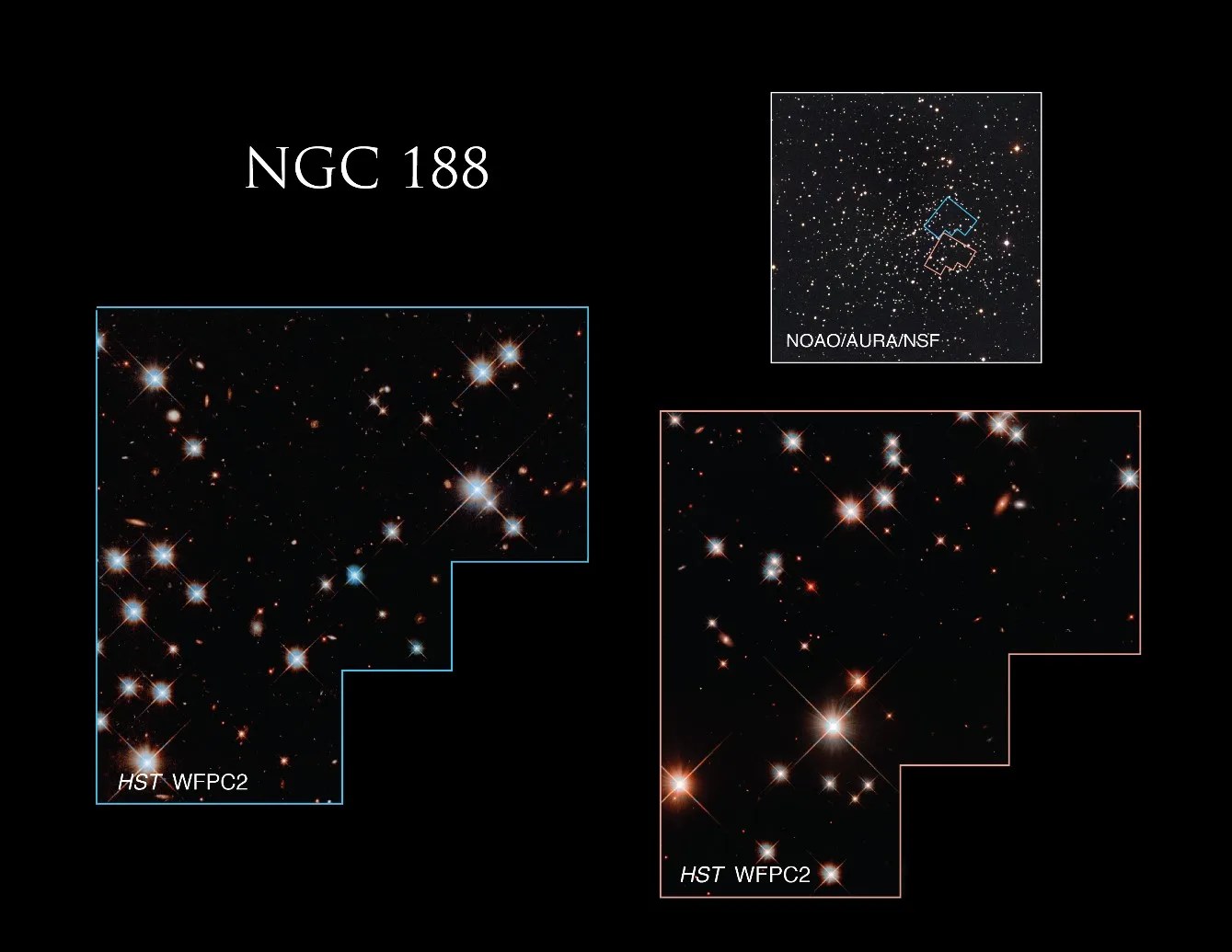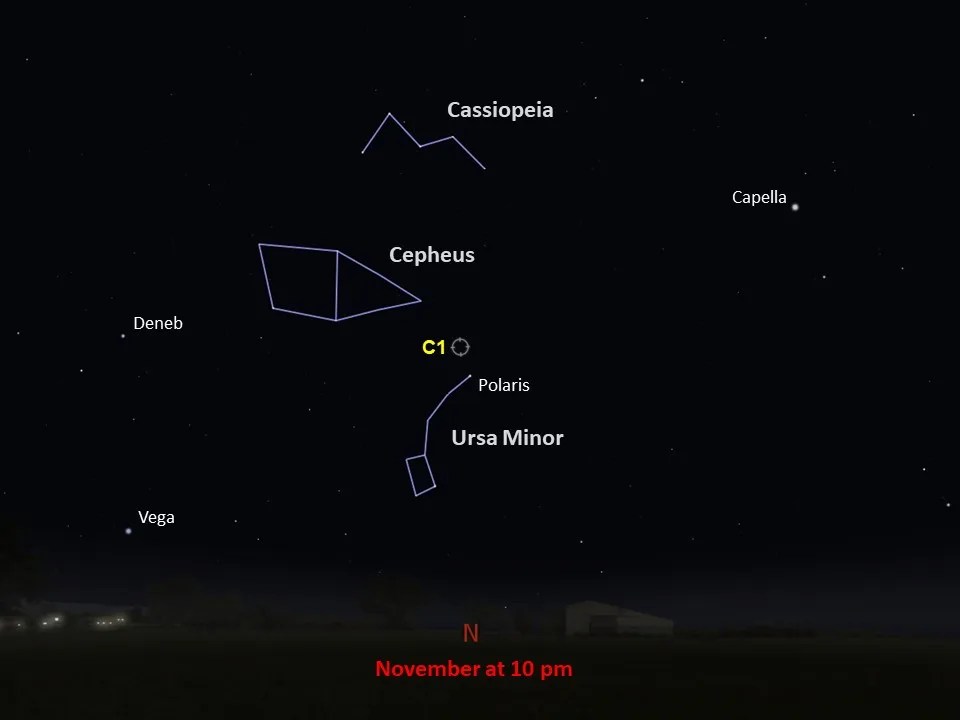Caldwell 1
Also known as NGC 188, this group of stars formed from a large cloud of gas making the stars roughly the same age.
Distance
5,400 light-years
Apparent Magnitude
8.1
constellation
Cepheus
object type
Open Cluster

This collection of stars is part of Caldwell 1, the first object in the Caldwell catalog. Also known as NGC 188, it is an open cluster, a group of stars that were all formed from the same large cloud of gas and are therefore all roughly the same age. Scientists are interested in such clusters because they can study how the chemicals in each star vary from one star to another.


Many open clusters, like Caldwell 1, are made up of stars that aren’t very close together and therefore have only a loose gravitational connection. For this reason, these stars have the tendency to slowly drift apart over millions of years. But Caldwell 1 is different. One of the oldest open clusters known, it sits far enough away from our galaxy’s core that it hasn’t yet been ripped apart by the galaxy’s gravitational influences. Caldwell 1 is estimated to be at least 6.8 billion years old.
Caldwell 1 was discovered in 1831 by John Herschel, an English polymath who invented the blueprint and named seven of Saturn’s moons along with four moons orbiting Uranus, the planet his father, William Herschel, discovered. This ancient cluster, which boasts an apparent magnitude of 8.1, contains a good number of middle-aged stars called main sequence stars. Such stars often pique the interest of researchers because they tend to be the best candidates to host exoplanets that could support life. However, Caldwell 1 is over 5,400 light-years away from Earth, making it slightly more difficult to study than closer stars when searching for planets.
Caldwell 1 is located in the constellation Cepheus and is circumpolar, meaning it is so close to the North Celestial Pole that it is above the horizon at all times from anywhere in the Northern Hemisphere. Because of this, Caldwell 1 is easily viewed year-round for northern observers. It is not far from Polaris, the North Star, located at the end of the “handle” of the Little Dipper. Use a telescope to find the soft, dim glow from this cluster of stars, and on especially dark nights, you may be able to see some of the brightest of the bunch resolved within.
The image above, showing just a portion of Caldwell 1, was captured by Hubble’s Wide Field Camera 3. Astronomers have studied Caldwell 1 with that camera as well as its predecessor, the Wide Field and Planetary Camera 2, to better understand the age of the cluster’s stars and of the cluster itself. Using Hubble’s Advanced Camera for Surveys, others have investigated unusual stars called “blue stragglers” in Caldwell 1, finding signs that these stellar oddballs are actually pairs of stars that have shared material between them, causing one member of the pair to appear hotter and bluer than it should for its age. Caldwell 1 was also the first target of one of Hubble’s original science instruments, the Faint Object Camera, which imaged a pair of stars in the cluster during an engineering test soon after Hubble’s launch in 1990.
For more information about Hubble’s observations of Caldwell 1, see:
Hubble Helps Solve Mystery of ‘Born Again’ Stars
ESA’s Faint Object Camera First Images

Glossary
Apparent Magnitude - The brightness of an astronomical object as seen from Earth, influenced by the object's distance from Earth, its absolute magnitude, and even gas and dust that lie between the object and Earth.
Blue Straggler - A blue star in a star cluster that appears to be far younger than its neighbors, likely resulting from collisions between stars or by other stellar interactions.
Open Cluster - A group of stars loosely bound by gravity, destined to be short lived because the gravitational interactions between members are weak enough that stars can be drawn away from the cluster by stronger gravitational forces.
Explore Hubble's Caldwell Catalog
The following pages contain some of Hubble’s best images of Caldwell objects.

Caldwell 2
This shell of gas is expanding outward, away from the dying star within.

Caldwell 3
This barred spiral galaxy was first spotted by British astronomer William Herschel in April 1793 in the constellation Draco.




